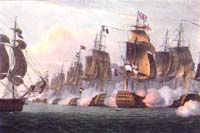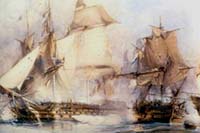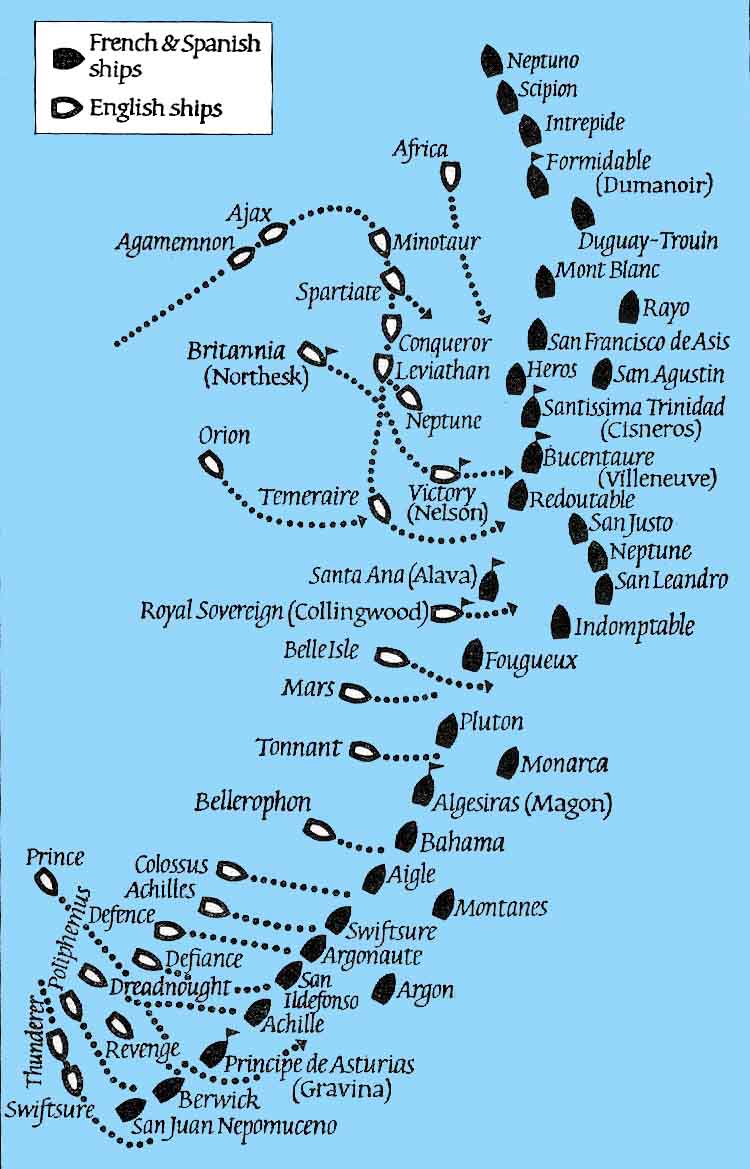 |
Battle map The Battle of Trafalgar October 21st, 1805 |
 |
 |
Battle map The Battle of Trafalgar October 21st, 1805 |
 |
René Maine in his book 'Trafalgar' writes:
'Two navies, two schools of thought were about to engage, led by two men who were opposites in every respect. Nelson was 47, and the most illustrious member of the Royal Navy. This was due less to his courage under fire - many captains in the British fleet were his equals on that score - than to the breadth and acuteness of his perception, the soundness and speed of his decisions, his talent for organisation, his gift for training men, his insatiable ambition, his supreme contempt for any adversary who was accorded the honour of engaging him - and lastly, his unlimited love of fighting and of life itself.
'Villeneuve was 42. He was one French seaman among many others, deeply patriotic, a good serviceman, a good fighter, honourable and straight. But he lacked imagination and daring, enthusiasm and willpower. He was incapable of understanding his men, nor did they understand him. He was outpaced and overwhelmed by the stormy genius of his all-powerful master (Napoleon). He was a weakling, a fatalist, diffident and sceptical, who was energetic only in his despair, and resolute only in his resignation'.
* * * * *
The map shows the position of the fleets at the beginning of the battle. The British fleet was divided into two columns, led by Nelson in the north and Collingwood in the south. The first shots were fired around noon and fighting continued until about 4.30pm. While the centre and rear sections of the Franco-Spanish fleet battled with the Royal Navy, the head of the column, under Dumanoir, continued towards Cadiz and took little part in the battle. From a total of 18 British prizes, four were taken to England and used as hulks or storeships. Only 10 of the original 33 Franco-Spanish ships returned to port, and of these, four were captured by Commodore Strachan on 4 November.
 |
Ships of the Franco-Spanish Fleet Ships of the British Fleet